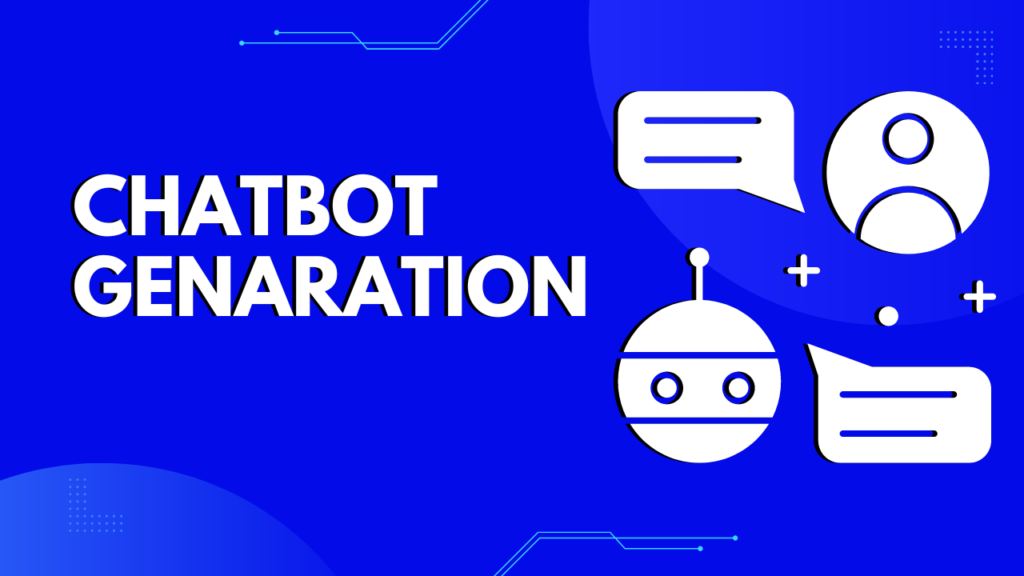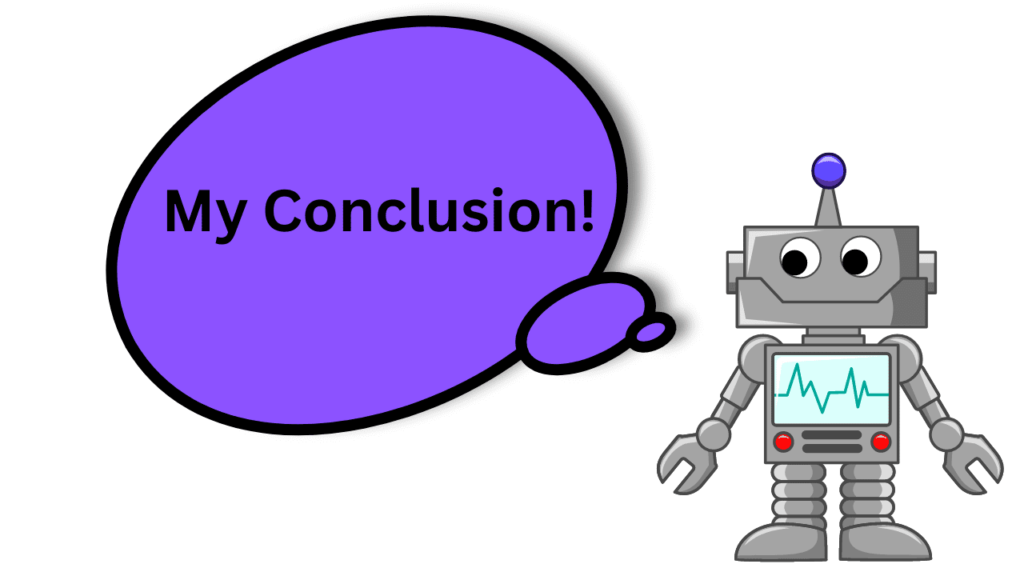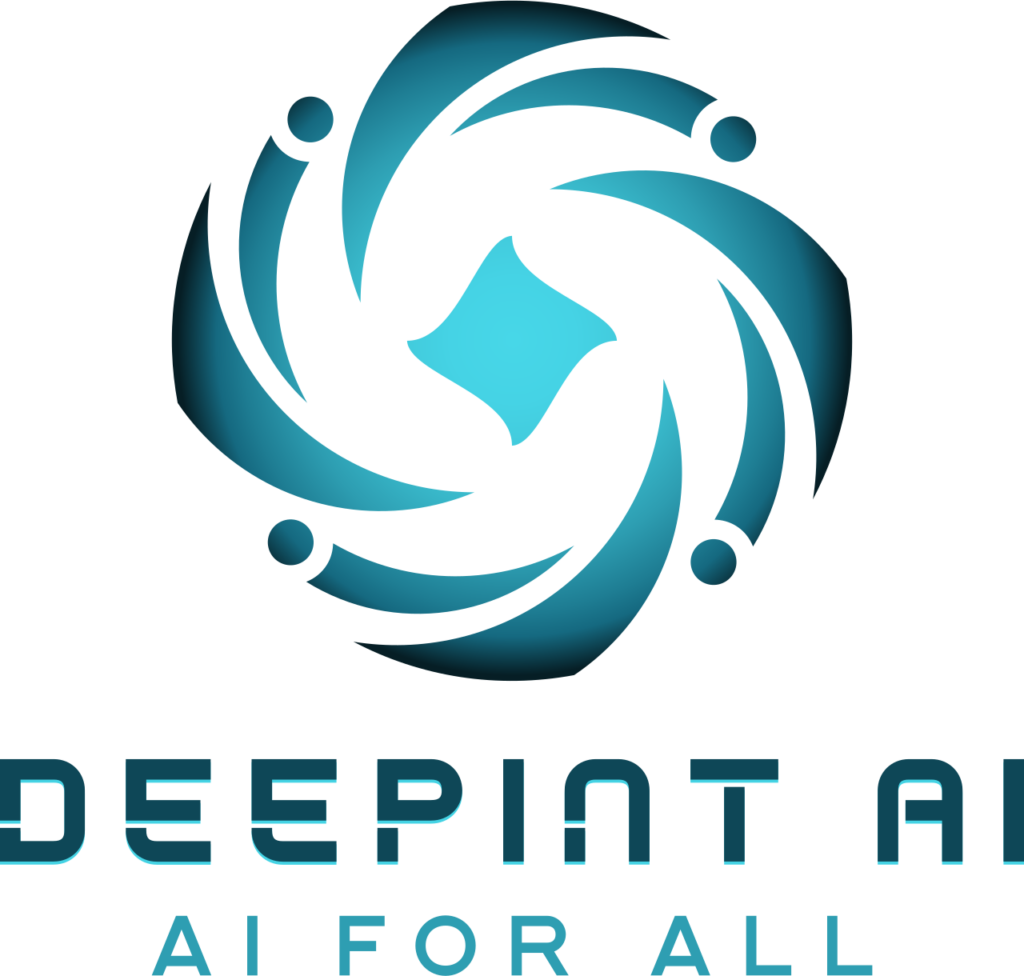The Evolution of Chatbot Generation: From Rule-Based to AI-Powered

The evolution of chatbot generation has been a remarkable journey, transitioning from rudimentary rule-based systems to the sophisticated realm of AI-powered conversational agents. In the early stages, chatbots relied on predefined rules and patterns, limiting their ability to engage in natural and contextually relevant conversations. However, with the advent of artificial intelligence and natural language processing, the landscape transformed. Modern chatbot generation now encompasses cutting-edge techniques such as neural language models and machine learning algorithms. These AI-powered chatbots can comprehend user intent, adapt to various linguistic nuances, and even learn from continuous interactions. As a result, they deliver personalized and dynamic conversational experiences that mirror human-like interactions. This evolution marks a pivotal shift in how businesses connect with their audiences, providing efficient customer support, personalized recommendations, and streamlined interactions. The journey from rule-based to AI-powered chatbot generation underscores the relentless pursuit of creating seamless and meaningful user experiences in today’s digital age.
Creating Conversational AI: A Comprehensive Guide to Chatbot Generation
In the realm of modern technology, the creation of Conversational AI, specifically chatbots, has emerged as a transformative solution for businesses looking to enhance customer engagement and streamline interactions. This comprehensive guide delves into the intricacies of chatbot generation, equipping you with the knowledge to build intelligent and effective conversational agents from the ground up.
Understanding the Fundamentals: Embarking on the journey of chatbot development requires a strong grasp of the fundamentals. Learn about the underlying technologies such as Natural Language Processing (NLP) and Machine Learning that empower chatbots to understand user input and respond contextually.
Designing Engaging Dialogues: Crafting compelling and natural-sounding conversations is key to successful chatbot interaction. Discover strategies for designing dynamic dialogues, scripting user flows, and creating responses that resonate with users across various scenarios.
Choosing the Right Platform: Navigate through the array of platforms and frameworks available for chatbot development. Compare the features, integration capabilities, and scalability of platforms to find the one that aligns with your project goals.
Implementing AI-Powered Responses: Explore the power of AI in generating responses that go beyond simple rule-based replies. Dive into techniques like generative language models and reinforcement learning to empower your chatbot with the ability to learn and adapt over time.
Data Management and Training: Effective chatbots are the result of meticulous data management and continuous training. Learn how to curate and preprocess training data, fine-tune models, and ensure your chatbot evolves with changing user behaviors.
Deployment and User Experience: A successful chatbot is not only about functionality but also user experience. Get insights into deploying chatbots across various platforms, integrating them with websites and messaging apps, and ensuring a seamless and intuitive user journey.
Measuring and Improving Performance: Metrics are essential for gauging the effectiveness of your chatbot. Discover key performance indicators (KPIs) to track, analyze user interactions, and iterate on your chatbot to continually enhance its performance.
Chatbot Generation Tools Comparison: Finding the Right Platform for You
In the rapidly evolving landscape of conversational AI, selecting the ideal platform for chatbot generation is crucial to achieving successful outcomes. This comprehensive comparison guide aims to simplify your decision-making process by highlighting the key features and benefits of various leading chatbot generation tools.
Platform A: Conversational Flow Customization
Platform A offers an intuitive visual interface for crafting conversational flows. With drag-and-drop functionality, users can seamlessly design user interactions, define branching paths, and create dynamic responses. This platform is perfect for those who prioritize user experience and want a high level of customization.
Platform B: AI-Powered Natural Language Understanding
Platform B leverages advanced Natural Language Processing (NLP) capabilities, enabling chatbots to understand user intents and context. Its AI-driven responses adapt to user input, ensuring a more human-like interaction. If delivering contextually relevant responses is paramount, this platform might be your ideal choice.
Platform C: Multi-Channel Deployment
For those aiming to deploy chatbots across various platforms, Platform C shines. It offers seamless integration with websites, messaging apps, and social media, ensuring your chatbot reaches users where they are most comfortable engaging. This platform is perfect for businesses looking to expand their chatbot’s reach.
Platform D: Analytics and Performance Insights
Platform D goes beyond chatbot creation, offering robust analytics to measure engagement, conversion rates, and user satisfaction. If data-driven optimization is your priority, this platform provides the metrics and insights needed to continually enhance your chatbot’s performance.
Platform E: Code-Free Integration
If you’re seeking a code-free approach, Platform E might be your answer. It offers pre-built templates and easy-to-use interfaces that require minimal technical expertise. This platform empowers individuals without coding skills to create sophisticated chatbots effortlessly.
Platform F: Machine Learning Integration
Platform F stands out with its machine learning integration, allowing chatbots to learn from user interactions and improve over time. If you envision a chatbot that evolves with user behaviors, this platform offers the tools to implement adaptive learning mechanisms.
Humanizing Interactions: The Role of Natural Language Processing in Chatbot Generation
In the realm of chatbot generation, the integration of Natural Language Processing (NLP) has emerged as a cornerstone for creating human-like interactions that resonate with users. NLP, a subfield of artificial intelligence, equips chatbots with the ability to understand, interpret, and respond to human language in a manner that goes beyond mere rule-based responses.
Understanding User Intent: NLP-powered chatbots can decipher user intent, allowing them to grasp the underlying meaning behind user queries. This empowers chatbots to provide contextually relevant and accurate responses, enhancing user satisfaction and engagement.
Conversational Context: One of NLP’s key contributions is its capacity to maintain conversational context. Chatbots utilizing NLP can remember past interactions, enabling more coherent and natural conversations. Users can seamlessly transition between topics without the frustration of repeatedly providing context.
Language Nuances: Human language is replete with nuances, including idioms, slang, and cultural references. NLP allows chatbots to comprehend and incorporate these nuances, creating a more relatable and comfortable user experience that mirrors human communication.
Adaptability and Learning: Through machine learning algorithms, NLP-powered chatbots can learn from each interaction, improving their responses over time. This adaptive learning mechanism ensures that chatbots continuously enhance their performance and cater to evolving user needs.
Emotion Recognition: A critical aspect of human interaction is emotion recognition. NLP enables chatbots to identify emotional cues in user text, allowing them to respond with empathy and appropriate tone, thereby forging deeper connections with users.
Multilingual Capability: NLP-driven chatbots can transcend language barriers by understanding and responding in multiple languages. This opens doors to global interactions and audience expansion, crucial for businesses operating in diverse markets.
In essence, the integration of Natural Language Processing revolutionizes chatbot generation by imbuing these AI-driven agents with human-like conversational abilities. NLP enables chatbots to decode user intent, maintain context, grasp language nuances, learn and adapt, recognize emotions, and transcend linguistic boundaries. The result is an enhanced user experience that bridges the gap between technology and human communication, fostering meaningful and effective interactions. As the evolution of NLP continues, chatbots hold the potential to redefine customer engagement and support across industries.
Code-Free Chatbot Generation: Building Dynamic Conversational Flows
In the dynamic world of chatbot generation, the emergence of code-free platforms has revolutionized the process of creating engaging and interactive conversational experiences. These platforms empower individuals with varying technical backgrounds to design and deploy chatbots without the need for extensive coding knowledge.
Visual Interface for Intuitive Design: Code-free chatbot generation platforms provide a user-friendly visual interface. With drag-and-drop functionality, users can effortlessly create conversational flows by arranging elements such as messages, user inputs, and responses. This intuitive design process makes it accessible even to those without coding expertise.
Personalized User Journeys: Building dynamic conversational flows becomes a breeze with the ability to define branching paths based on user responses. This personalization ensures that users are guided through a tailored journey, enhancing user engagement and satisfaction.
Pre-Built Templates: Code-free platforms often offer a range of pre-built templates catering to various industries and use cases. These templates serve as starting points, saving time and effort in creating chatbots from scratch. Users can customize templates to align with their specific requirements.
Real-time Preview and Testing: Immediate feedback is crucial during chatbot development. Code-free platforms allow users to preview and test their chatbots in real-time, ensuring that conversational flows work as intended before deployment.
Seamless Integration: Code-free chatbot platforms often provide seamless integration options with websites, messaging apps, and other digital platforms. This ensures that chatbots can be deployed across multiple channels, reaching users where they are most comfortable engaging.
Continuous Iteration and Improvement: Just as coding chatbots can evolve, code-free platforms also facilitate continuous iteration. Users can analyze interaction data and make improvements to conversational flows, ensuring a chatbot that grows alongside changing user behaviors.
Empowering Non-Technical Users: The democratization of chatbot creation is a hallmark of code-free platforms. They enable marketing professionals, customer support teams, entrepreneurs, and individuals from various domains to harness the power of AI without relying on dedicated developers.
Enhancing User Experience with Personalized Chatbot Generation
In the realm of modern customer engagement, personalized experiences have become paramount, and chatbot generation is no exception. Personalization goes beyond simple interactions; it’s about tailoring conversations to individual preferences, behaviors, and needs. Through personalized chatbot generation, businesses can forge deeper connections with users and deliver exceptional user experiences.
Understanding User Preferences: Personalized chatbots excel at collecting and analyzing user data to understand preferences. By examining past interactions, browsing history, and purchase behaviors, chatbots can provide tailored recommendations and responses.
Contextual Conversations: Personalization is not just about knowing user preferences; it’s about maintaining context across conversations. Personalized chatbots excel at retaining information from previous interactions, creating coherent and contextually relevant dialogues.
Dynamic Content Delivery: With personalized chatbot generation, content delivery becomes dynamic and adaptive. Chatbots can present users with content and solutions that align with their interests and requirements, ensuring higher engagement and conversion rates.
Proactive Assistance: Leveraging personalized insights, chatbots can initiate proactive interactions. For instance, a chatbot might reach out to remind a user about an abandoned cart or provide recommendations based on recent searches, adding value to the user journey.
Segmented User Engagement: Personalized chatbot generation allows businesses to create user segments based on demographics, behaviors, and interests. This segmentation enables targeted campaigns and personalized engagement strategies.
Building Brand Loyalty: When chatbots offer personalized experiences, users are more likely to feel understood and valued. This, in turn, nurtures brand loyalty and long-term customer relationships.
Data-Driven Refinement: Personalized chatbots continuously learn and refine their responses based on user interactions. By analyzing user feedback and engagement patterns, chatbots can evolve to better meet user needs.
Balancing Privacy and Personalization: While personalization is crucial, respecting user privacy is equally important. Successful personalized chatbot generation strikes the right balance between gathering user data for personalization and ensuring data security and privacy.
Designing Context-Aware Chatbots: Strategies for Relevant Responses
In the evolving landscape of chatbot design, context-awareness has emerged as a pivotal factor in delivering meaningful and relevant interactions. Context-aware chatbots possess the ability to understand and adapt to the ongoing conversation, ensuring that responses remain pertinent and aligned with user intent. Implementing effective strategies for context-awareness can elevate the user experience and drive engagement to new heights.
1. Continuous Context Monitoring: Context-aware chatbots constantly monitor the conversation to grasp the evolving context. This involves analyzing user inputs, previous interactions, and any changes in topic or tone to provide accurate responses.
2. Natural Language Understanding (NLU): Integrating advanced Natural Language Understanding capabilities allows chatbots to interpret the subtleties of language, including idioms, sarcasm, and implied meanings. This enables chatbots to respond contextually, even in complex linguistic scenarios.
3. Dynamic Memory Retention: Enabling chatbots to retain information from previous exchanges ensures that conversations flow naturally. Dynamic memory retention allows chatbots to recall user preferences, historical data, and past interactions, enhancing the coherence of the dialogue.
4. Multi-Turn Contextual Awareness: Effective context-aware chatbots consider not just the immediate user input but also the broader conversation context. They take into account the history of the conversation to provide responses that align with the user’s journey.
5. Intent Prediction: Employing machine learning techniques, context-aware chatbots can predict user intents based on current input and historical patterns. This proactive approach ensures that chatbots anticipate user needs and provide relevant responses preemptively.
6. Handling Interruptions Gracefully: Real-life conversations often involve interruptions and tangents. Context-aware chatbots are equipped to handle such disruptions gracefully, seamlessly transitioning back to the main topic without causing confusion.
7. Personalized Recommendations: By leveraging contextual information such as user preferences and purchase history, context-aware chatbots can offer personalized recommendations, driving conversions and customer satisfaction.
8. User Feedback Loop: Context-aware chatbots can learn from user feedback to refine their context-handling strategies. Collecting and analyzing user feedback helps chatbots adapt and improve their responses over time.
9. Hybrid Approaches: A blend of rule-based approaches and machine learning models can be employed to achieve optimal context-awareness. Rule-based systems ensure accuracy in predefined scenarios, while machine learning models adapt to the nuances of user interactions.
10. Ethical Considerations: As context-aware chatbots delve into the realm of user data, ethical considerations are crucial. Ensuring data privacy, transparency, and user consent is essential in creating a trustworthy user experience.
Conclusion

In conclusion, chatbot generation stands at the crossroads of technological advancement and user-centric engagement. This transformative field has evolved from simple rule-based systems to sophisticated AI-powered agents capable of delivering personalized, dynamic, and contextually relevant interactions. The journey of chatbot generation encompasses a range of strategies, techniques, and considerations that collectively reshape the way businesses and individuals interact with technology.
In the era of conversational AI, chatbot generation is a testament to the fusion of technology and human interaction. By blending the capabilities of AI with the understanding of user needs, preferences, and emotions, chatbots bridge the gap between businesses and their customers. As technology continues to evolve, the journey of chatbot generation is poised to redefine the very essence of customer engagement, user support, and the way we interact with the digital world.

